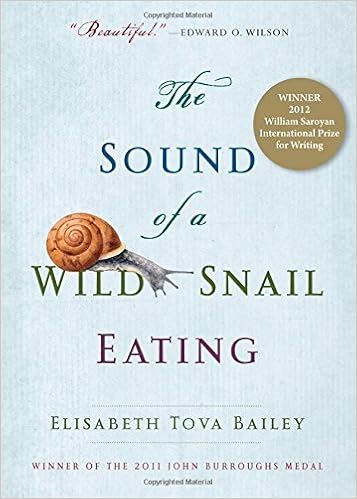Mrs. Lincoln's Dressmaker by Jennifer Chiaverini
Book Annotation - Historical Fiction
Author: Jennifer Chiaverini
Title: Mrs. Lincoln’s Dressmaker
Genre: Historical Fiction
Publication Date: 01/15/2013
Number of Pages: 356 pgs.
Geographical Setting: Washington City, District of Columbia
Time Period: November 1860 - 1901
Plot Summary: This is the story of the friendship between Mary Todd Lincoln and Elizabeth Keckly, her mantua. Elizabeth is a former slave who purchased her freedom and established a seamstress’ shop in Washington, D. C. The novel takes place from the time Lincoln assumed the presidency until Elizabeth’s death. During this time, Elizabeth designed and sewed most of Mary’s dresses as well as arrange her hair, tame Mr. Lincoln’s locks and beard, care for their children, and became Mary’s confident and a source of solace and kindness.
Link:
A New York Times article: A Strong Thread in a Strong Union discussing the book and the movie, Lincoln, by Steven Spielberg.
Subject Headings: Keckly, Elizabeth,; approximately 1818 - 1907; Fiction.
Lincoln, Mary Todd.: 1818 - 1882; Fiction.
Women dressmakers; Fiction.
Female friendship; Fiction.
First ladies: Fiction.
Appeal:
3 terms that best describe this book: Genre:Historical fiction
Pace:Leisurely paced
Tone:Strong sense of place
Writing Style:Descriptive; Richly detailed
Similar Authors and Works (why are they similar?):
Mrs. Lincoln’s Rival by Jennifer Chiaverini
This novel takes a character from Mrs. Lincoln’s Dressmaker, Catherine Chase Sprauge, and explores this period in history through her eyes. Although Catherine and Mrs. Lincoln had much in common, they remained in a fierce rivalry during Lincoln’s presidency and beyond.
The Second Mrs. Hockaday by Susan Rivers
This novel uses diary entries and letters to create a story based on real events. I think it would be interesting to read this story about the Civil War from a southern perspective.
The Invention of Wings by Sue Monk Kidd
This novel, based on the historical figure Sarah Grimke, follows her 35 year relationship with Handful, a servant she was given for her eleventh birthday. The story begins in 19th century Charleston where Sarah was a controversial figure because she was an abolitionist and suffragist, yet came from a slave owning family. She even broke the law by teaching Handful to read and write.
3 Relevant Non-Fiction Works and Authors:
Behind the Scenes, or, Thirty Years a Slave, And Four Years in the White House by Elizabeth Keckly
In her own words, Elizabeth Keckly, writes about her life as a slave and the years she spent with Mrs. Lincoln as her modiste. It would be interesting to compare this to Mrs. Lincoln and Mrs. Keckly by Jennifer Fleischner.
Mrs. Lincoln and Mrs. Keckly by Jennifer Fleischner
This book gives the non-fiction account of the friendship between Mary Lincoln and Elizabeth Keckly. It is richly detailed and descriptive.
Mrs. Lincoln’s Dressmaker:The Unlikely Friendship of
Elizabeth Keckley and Mary Todd Lincoln by Lynda Jones
Although this book is classified as one for upper elementary students, I think it would be an excellent follow-up to the novel, Mrs. Lincoln’s Dressmaker. The book contains illustrations, including daguerreotypes, photos, paintings, and illustrations of the Lincoln's, Mrs. Keckley, and her masters. The book’s elegant design emphasizes period fashion and the art of dressmaking.
3 Relevant Fiction Works and Authors:
The Emancipator’s Wife by Barbara Hambly
Storyline: Character-driven
Pace:Leisurely paced
Writing Style:Richly detailed
The novel looks at the later years of Mary Todd Lincoln’s life, after she was sent to an asylum by her son, Robert. Here, she writes her memoirs and reflects on her life. It is richly detailed and character-driven, as well as being leisurely paced.
March by Geraldine Brooks
Character:Complex; Courageous; Flawed
Storyline: Character-driven
Writing Style:Lyrical; Richly detailed
This novel follows another family during the years of the Civil War. It is richly detailed and character-driven.

The Aviator’s Wife by Melanie Benjamin
Writing Style:Engaging; Lyrical; Richly detailed
This novel explores the life and relationships of another woman who is married to a famous gentleman, Charles Lindbergh. It is character-driven and is richly detailed.







![Spill Simmer Falter Wither by [Baume, Sara]](https://images-na.ssl-images-amazon.com/images/I/51VQjGIEyqL.jpg)

![Life of Pi by [Martel, Yann]](https://images-na.ssl-images-amazon.com/images/I/51JAnJWnbkL._SY346_.jpg)
